What Are URL Parameters?
URL parameters are extra pieces of information added to the end of a URL that tell a website how to customize the content, filter results, or track browsing sessions.
Here’s what URL parameters look like:
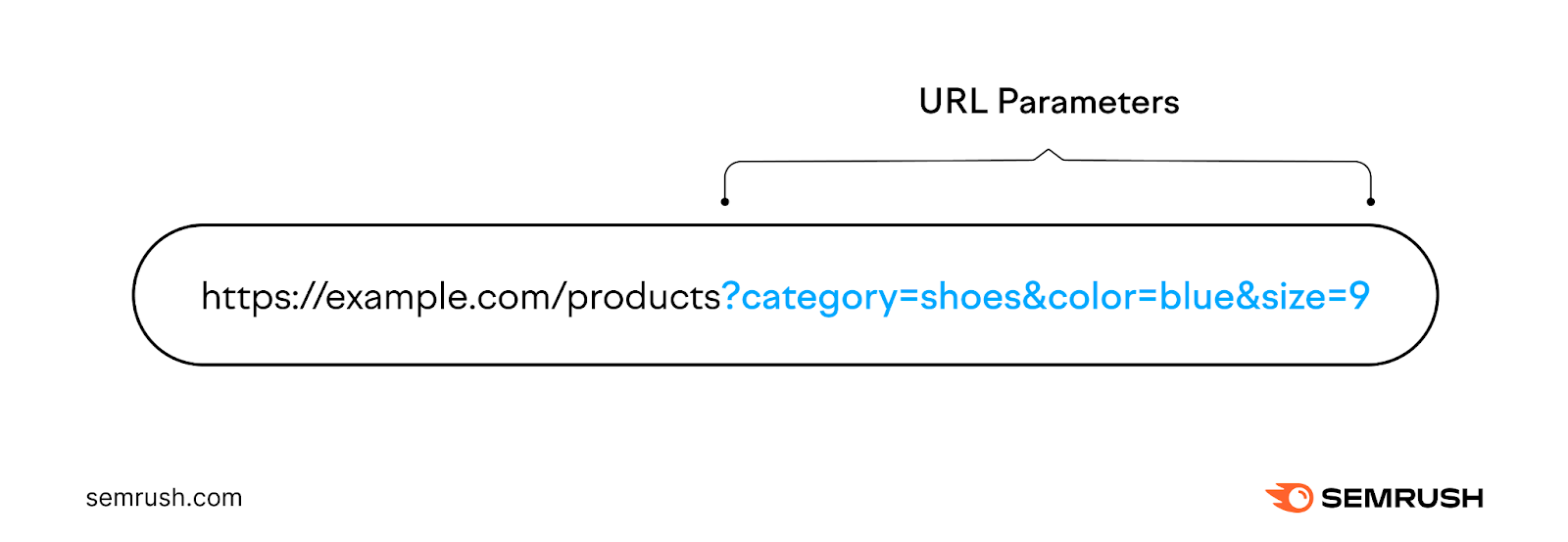
Let’s break this down into parts:
- Everything before the question mark (?) is your regular website address
- All parameters come after the question mark (?)
- Each parameter is written as a key and value separated by an equal sign (category=shoes)
- Multiple parameters are separated with an ampersand (&)
In the example above, the parameters filter the product listings to show only blue shoes available in size 9.
URL parameters can help you create a more personalized experience for your visitors, improve your website’s functionality, and gather valuable data for analytics purposes.
URL Parameters vs. Query Strings
The terms "URL parameters" and "query strings" are often used interchangeably, which is perfectly fine in most contexts.
However, there’s a subtle technical distinction.
URL parameters are specifically the individual key-value pairs:
category=shoes
color=blue
size=9A query string is the entire string of parameters, including the question mark and ampersands:
?category=shoes&color=blue&size=9Feel free to use either term. Most developers understand that they essentially refer to the same concept.
How Are URL Parameters Used?
You can use URL parameters in a variety of ways to enhance both the functionality of a website and the user experience.
Below are some of the most common use cases for URL parameters:
- Filtering and sorting content: You can use URL parameters to filter or sort content dynamically without users needing to reload the entire page. This is especially useful for ecommerce websites with numerous product categories and variations. Or any site that needs to help users narrow down large collections of items.
- Personalization: Websites can use parameters to tailor experiences, like showing users region-specific pages based on their location (?region=us) or displaying content in their preferred language (?lang=en). Though there’s a better alternative for this, which we’ll cover later.
- Pagination: URL parameters help display large sets of content across multiple pages (?page=2, ?page=3, ?page=4, and so on) to enable users to navigate through them. This is especially useful for websites with large collections, such as blog posts and product listings.
- Search functionality: URL parameters are also used in a website's search functionality. When a user submits a search query, the query is appended to the URL (?search=running+shoes), which allows the website to display relevant search results.
- Session management: Some websites use URL parameters to maintain session information and track user activity across multiple pages (?sessionid=xyz123). However, cookies have largely replaced this approach.
- Campaign tracking and analytics: Marketers can use URL parameters to track the performance of marketing campaigns. By adding specific parameters (?utm_source=facebook or ?campaign=summer_sale), they can monitor where traffic is coming from.
What Are the Main Types of URL Query Parameters?
URL parameters can be broadly categorized into two types: active and passive.
Active
Active parameters directly impact the content or functionality of a webpage.
When active parameters appear in a URL, the website uses these values to adjust what the page shows or how it behaves to create a dynamic and interactive experience tailored to the user’s needs.
We've already seen some examples of active parameters, including:
- Filtering product listings
- Loading a specific page from a paginated series
- Displaying a region-specific page
Passive
Passive parameters don't change what appears on the screen. Instead, they work behind the scenes to support functions like tracking user behavior or managing sessions.
These parameters help developers and marketers collect data and better manage important processes.
Think of uses like:
- Monitoring traffic sources
- Identifying user sessions
How Do Parameters in URLs Affect SEO?
While URL parameters are useful, they can impact your SEO performance.
The most common SEO issues URL parameters cause are:
- Duplicate content: URL parameters can create multiple versions of the same page, which search engines might interpret as duplicate content. For example, “?sort=asc” and “?sort=desc” may show the same content in a different order. This can confuse search engines about which version to rank.
- Crawl budget waste: Search engines allocate a crawl budget to each website, limiting the number of pages they will crawl within a given timeframe. If your site generates numerous URLs with parameters that lead to similar content, the crawler might waste time on these variations instead of discovering new, unique content.
- Keyword cannibalization: Multiple URLs with different parameters often target the same keyword group. This means your pages are essentially competing against each other in search results. This internal competition can prevent any single page from ranking well.
- Diluted ranking signals: URL parameters can affect how link equity (the ranking value passed through links) is distributed across your site. If external or internal links point to different parameterized versions of the same page, link equity might be split among these versions rather than consolidating on a single, main URL. This can weaken the main page's overall ranking potential.
5 SEO Best Practices for Using URL Parameters
To mitigate SEO challenges that URL parameters can create, follow these best practices:
1. Add Canonical Tags
All parameterized URLs should include a canonical tag (a type of HTML snippet) identifying the main page that doesn’t contain parameters as the canonical page.
Here’s what this tag looks like:
<link rel="canonical" href="https://www.yourdomain.com/your-main-page" />Canonical tags tell search engines which URLs should be indexed (stored in a database) for ranking. Which consolidates link equity to the main page and prevents issues with duplicate content.
Plus, search engines will prioritize crawling canonical pages over the parameterized variations as time passes, resulting in crawl efficiency for your site.
Adding canonical tags is particularly valuable for websites that have extensive filtering options, including:
- Ecommerce sites, where products can be filtered by color, size, brand, price, etc.
- Real estate websites, where properties can be filtered by location, price range, amenities, etc.
- Job boards with numerous filter combinations for industry, experience level, location, etc.
- Any other site that allows similar content to be accessed through different parameter combinations
Implementing canonical tags is relatively straightforward. Work with your developer to add this line to the <head> section of your parameterized pages and to the canonical version:
<link rel="canonical" href="https://www.yourdomain.com/your-main-page" />Make sure to replace the example URL with the main page URL you want to specify.
2. Block URLs Containing Parameters with Robots.txt
In some cases, you may need to prevent search engines from crawling URLs with specific parameters by configuring your robots.txt file.
Bots check the robots.txt file before they crawl your website. And they generally follow its instructions on which pages to avoid crawling. Consider these scenarios:
- You have parameters that generate near-infinite URLs with little unique content
- You're experiencing crawl budget issues, and search engines aren't able to crawl all of your important pages due to the sheer number of URLs with parameters
In each of these cases, blocking certain parameters can significantly improve how efficiently bots can crawl your website. And help search engines focus on your most important content.
You can check your crawl activity and identify problematic parameters in Google Search Console (GSC).
Go to GSC and navigate to the “Settings” option.
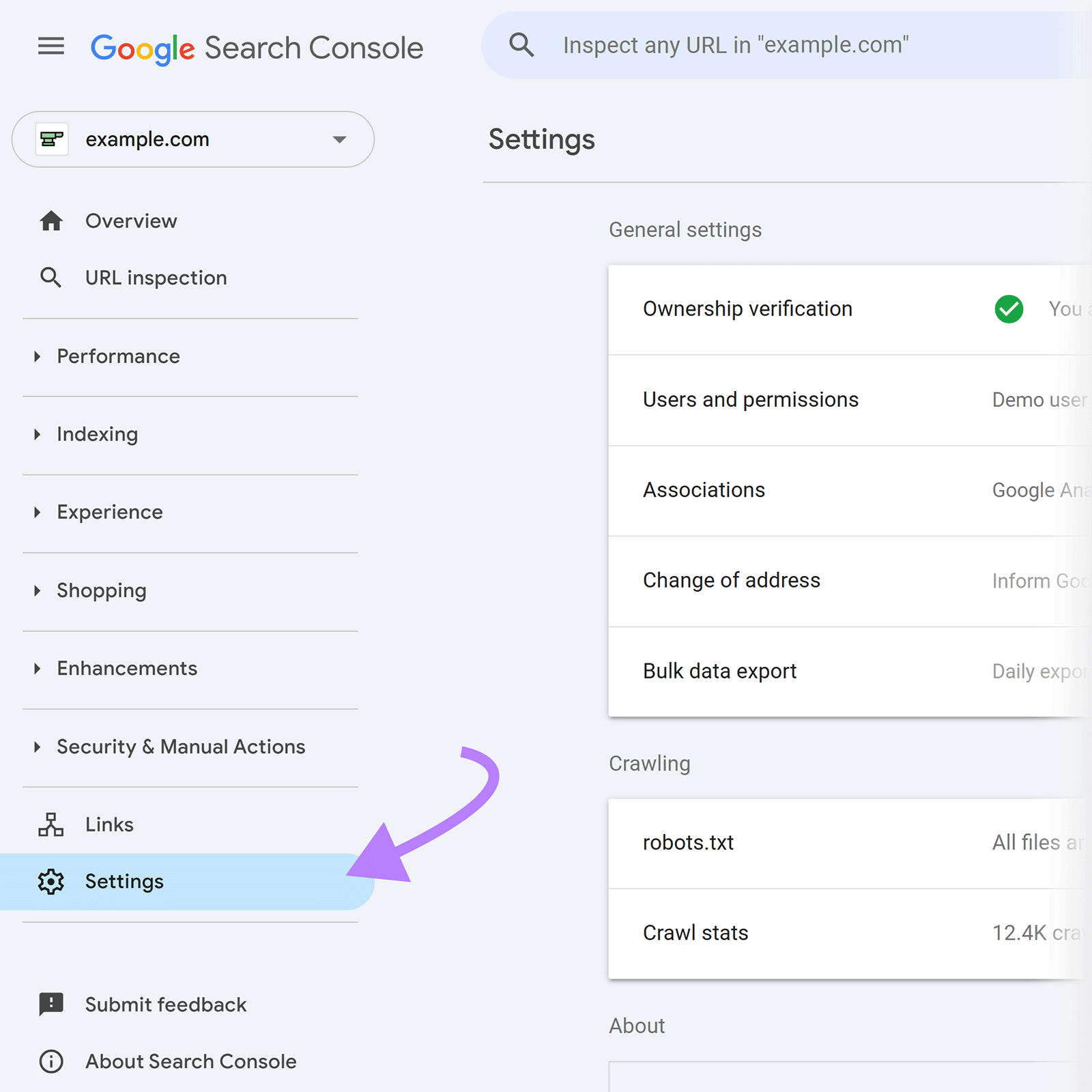
Find the "Crawl stats" report and click "Open Report"
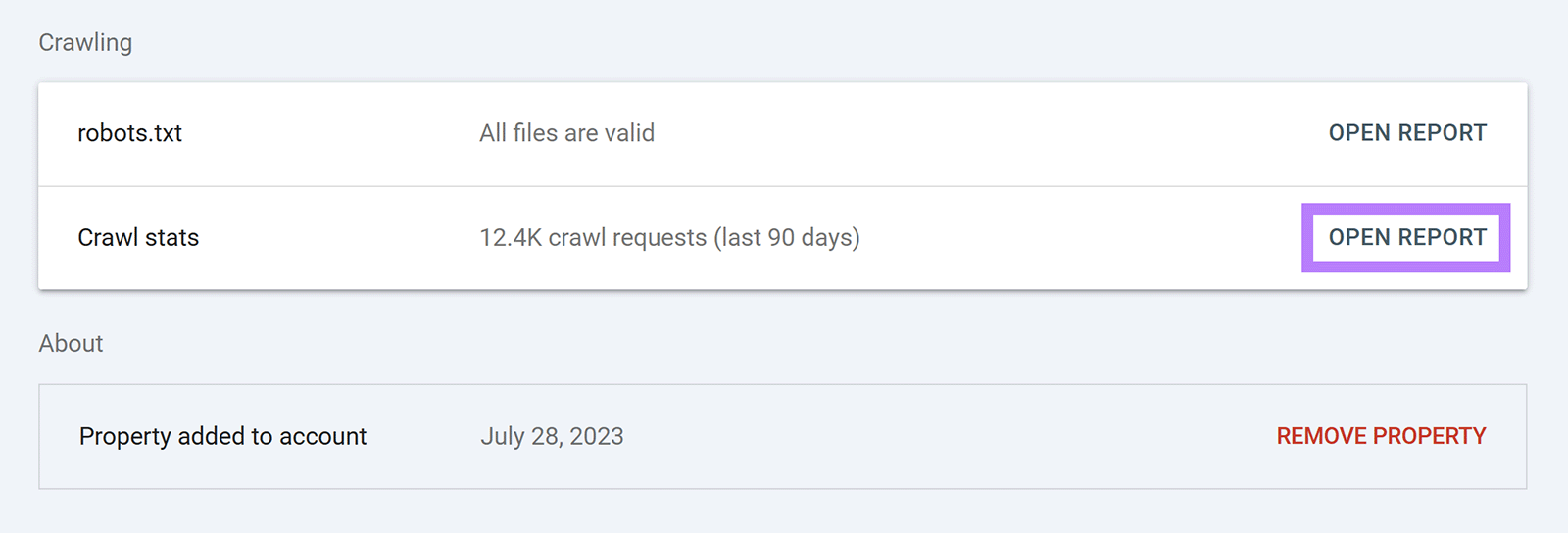
Then scroll to “By file type” and click “HTML.”

You’ll see Google’s crawl activity on your site.
Under the "Examples" section, you'll see the actual URLs being crawled. Pay close attention to any recurring parameters in these URLs that might be wasting your crawl budget.

Once you’ve identified the problematic parameters, update your robots.txt file to block them.
Like this:
User-agent: *
Disallow: /*?sort=This directive tells search engines to avoid crawling any URL that includes “?sort=,” preserving your crawl budget for your most important content.
3. Avoid URL Parameters for Localization
If your site serves customers in different regions and/or languages, it's best to avoid using URL parameters for localization because they aren’t very user-friendly and can confuse search engine bots.
Plus, Google explicitly states they don't recommend using URL parameters for localization.
Instead, it's better to use dedicated URLs for each region. This approach provides stronger geotargeting signals to search engines. You can achieve this by using:
- Subdirectories (e.g., example.com/fr/)
- Subdomains (e.g., fr.example.com)
- Separate country-code top-level domains (e.g., example.co.fr)
4. Use Consistent Internal Linking
An internal link is a hyperlink that connects one page on a website to another page within the same domain.
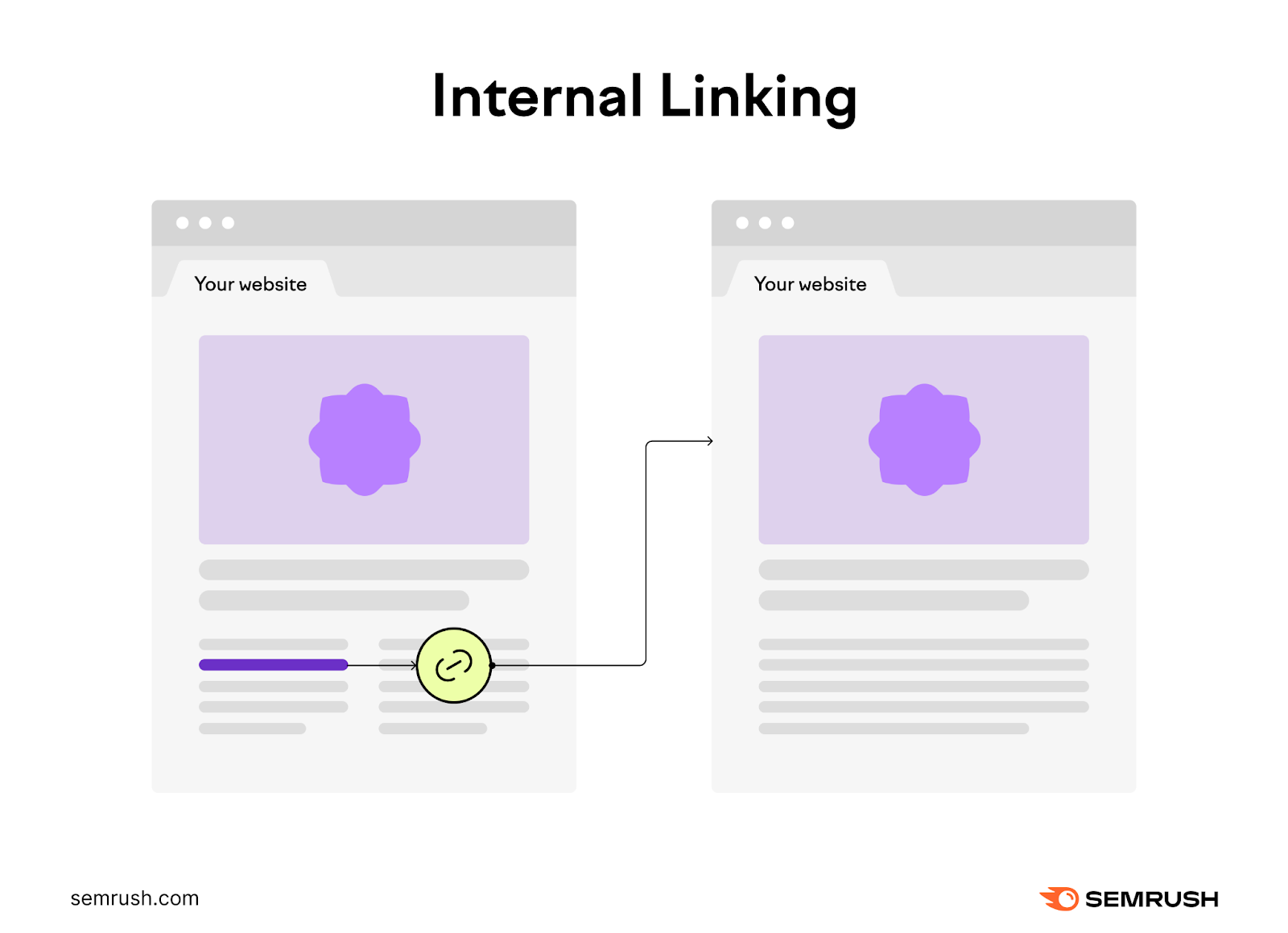
Instead of linking to variations with parameters, link directly to the clean, canonical version of each page from your navigation and other content.
This consolidates link equity and sends clear signals to search engines about which version should be prioritized for displaying in search results.
5. Exclude Parameterized URLs from Your Audits
If you regularly audit your site for SEO issues, it's important to filter out parameterized URLs to ensure your audit focuses on your core website content.
If you use Semrush’s Site Audit tool for auditing your site, you can configure the tool so it excludes parameterized URLs from crawling.
Here’s what the setup process looks like:
Open the tool, enter your domain, and click “Start Audit.”

In the setup wizard select, “Remove URL parameters.” And list the parameters you want to avoid crawling.
For example, if you want to exclude your pagination parameters (?page=1, ?page=2, ?page=3, etc.) mention “page” in the box to the right of the tab.
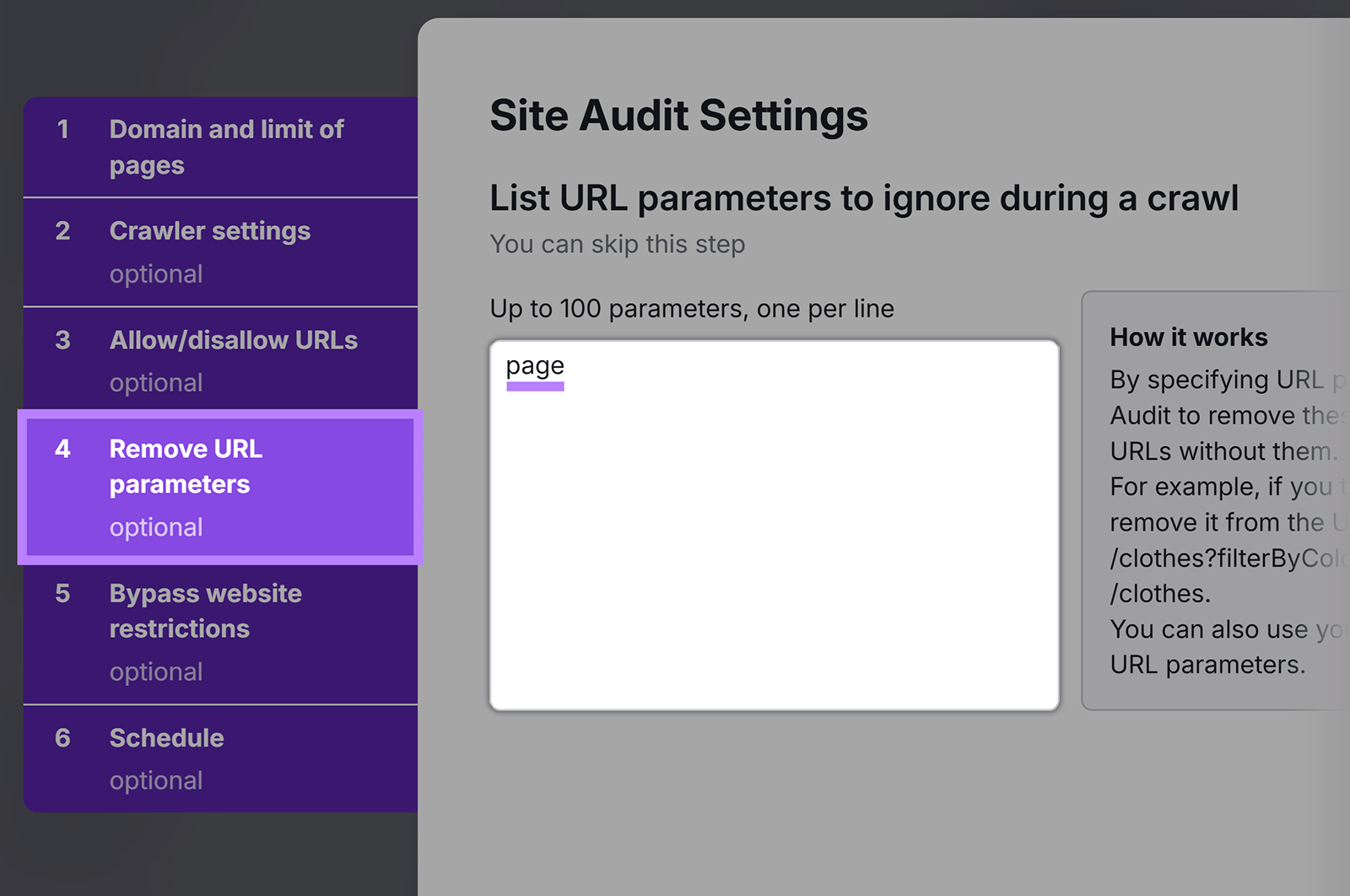
This will ensure the tool avoids crawling URLs that include the “page” key in their URL parameters.
After you list all the parameters you want to ignore, click “Start Site Audit.”
The tool will generate a report, providing you with an overview of your site’s technical health.
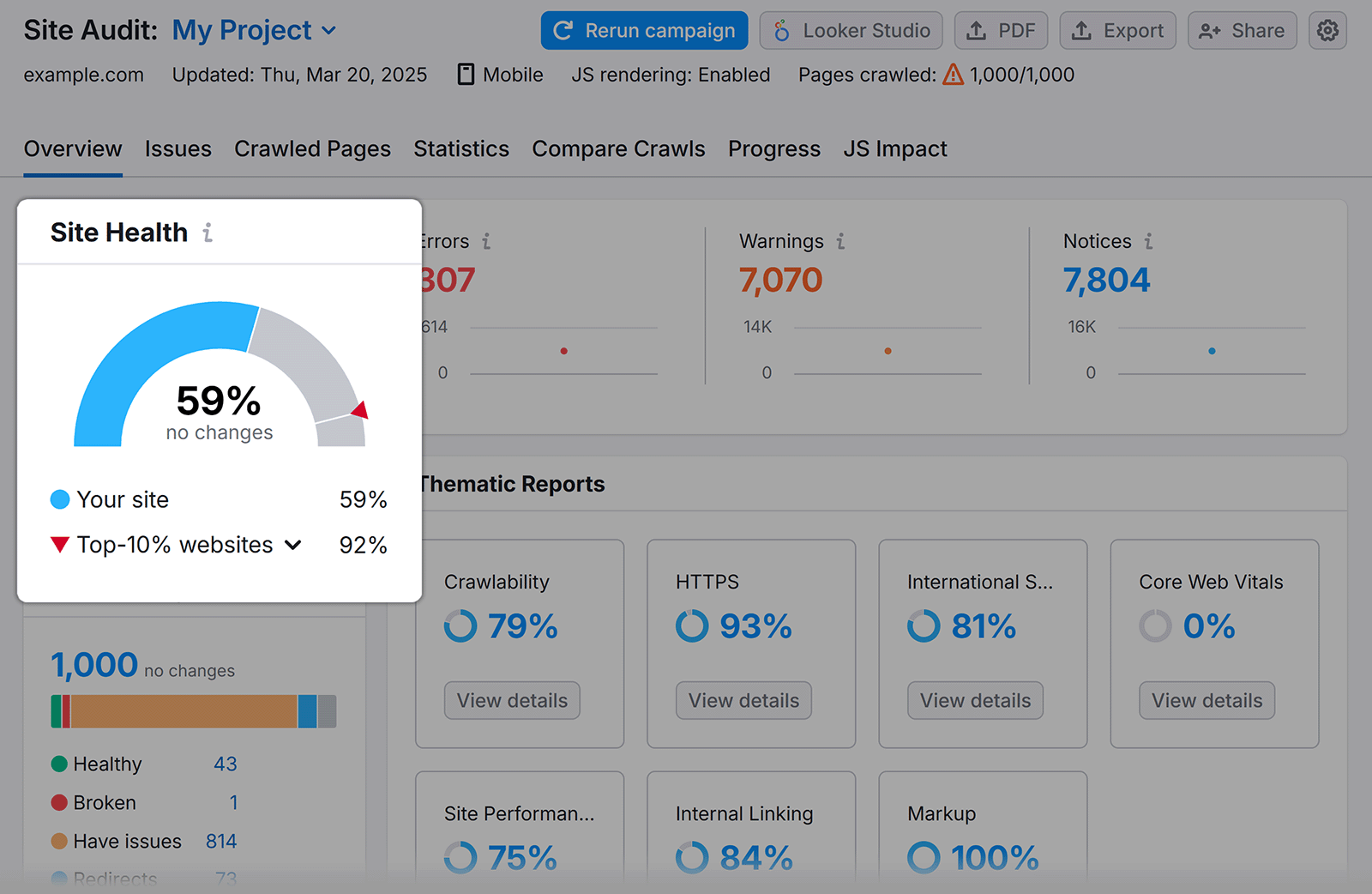
Along with some of the top issues it found on your site.
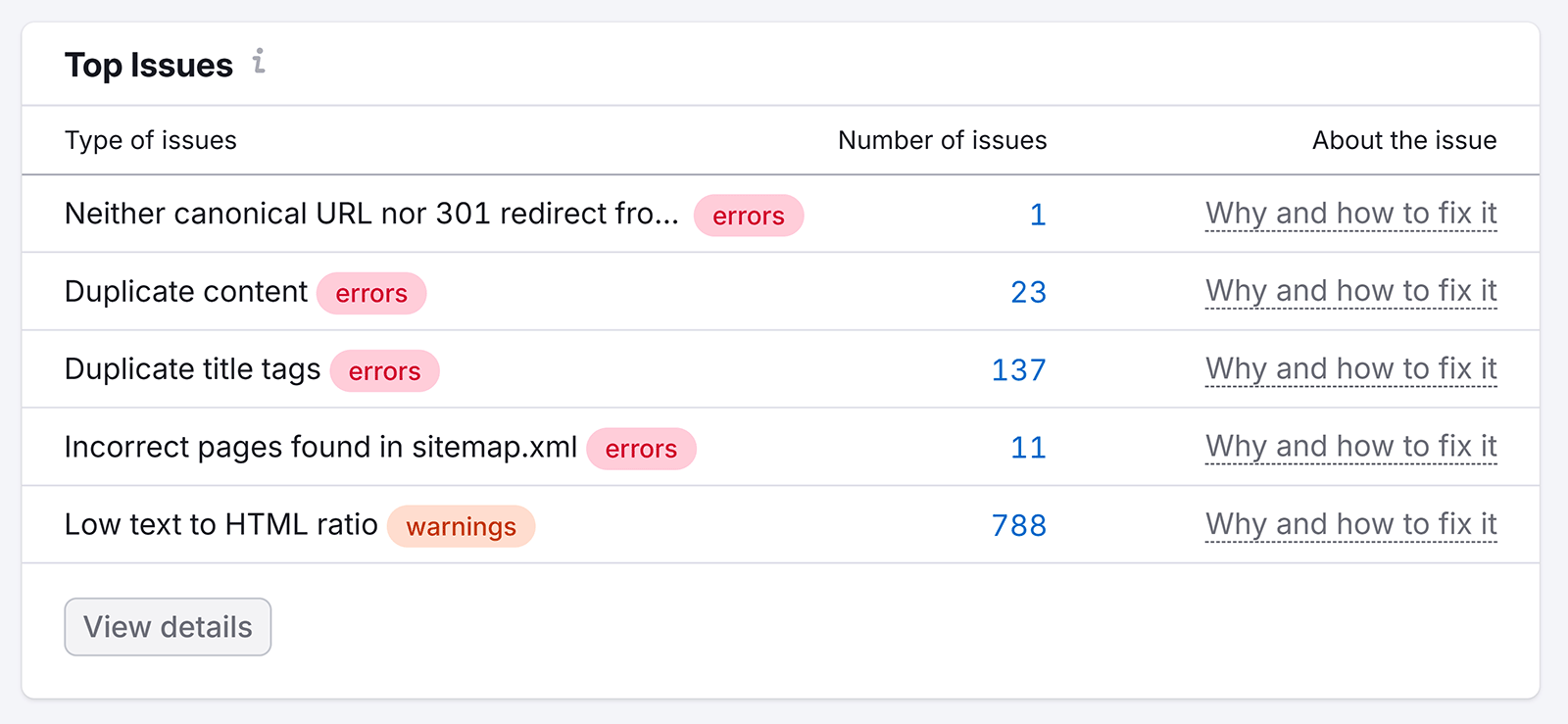
Then, you can review the issues. And take steps to fix them.